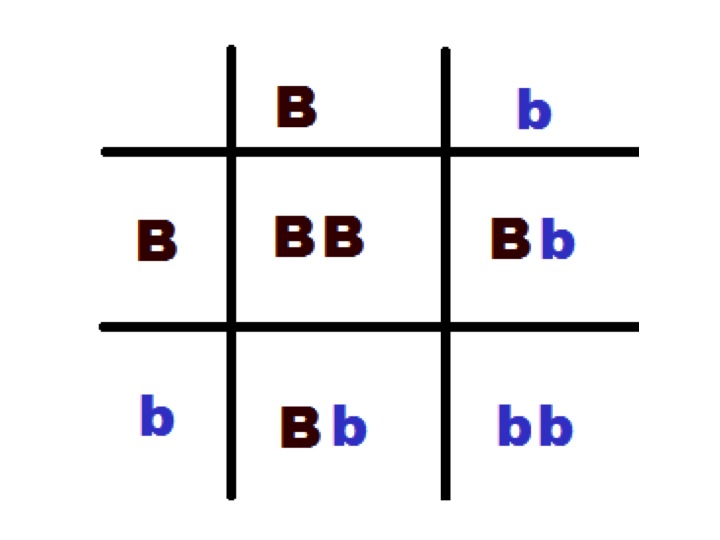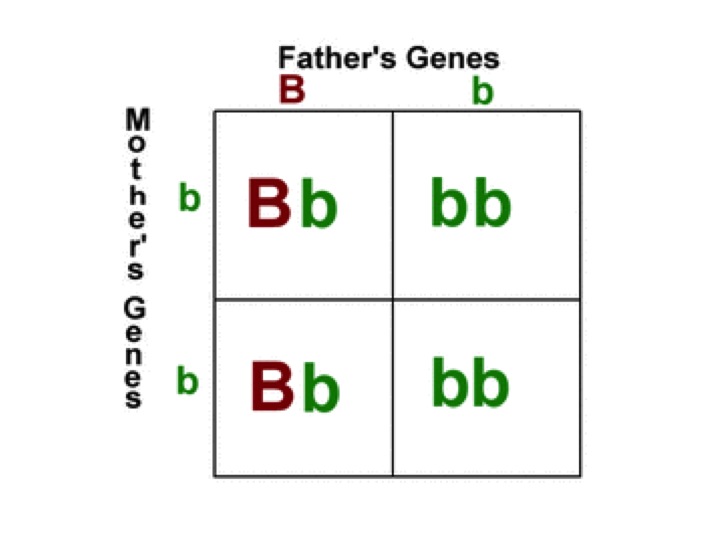
Mendel's theories of inheritance came from making careful observations while crossing pea plants. One observation was that the traits of the offspring (progeny) pea plants were determined by their parents' traits. And, that crossing plants with different traits resulted in different offspring.
This observation was, in large part, because we have two copies of each gene. We inherit one copy of a gene on the chromosome inherited from our mother and the other copy of the gene on the other chromosome inherited from our father. The trait that we have is determined by how these two inherited genes interact with each other.
When we look at traits through generations, genes fall into just a few patterns of how they are inherited. These modes of inheritance, as determined by Mendel, can predict how likely it is that children will receive a particular trait from their parents - a very useful piece of information when inherited diseases are involved.
Here, we describe the two main modes of inheritance for genes that are carried on autosomes - recessive or dominant. Autosomes are the chromosomes in our cells that do not determine our sex (X or Y) - chromosomes 1-22 - each of which we have two copies of.
Cystic fibrosis (CF) is an example of a recessive trait. The gene that is important is the Cystic Fibrosis Transmembrane Regulator (CFTR.) In a person with CF - both inherited copies of the CFTR gene have mutations in them. Therefore, all of their CFTR protein is essentially, none functional.
If they have a mutation in one of the copies of the CFTR gene that they inherited, the person will not have CF but will be a carrier for CF. They don't have CF because they have one good copy of the gene that is making functional CFTR protein. As a carrier, they have the possibility of passing it to their children.
If two carriers of CF decide to have a child, the baby has a 25% chance of having CF. This can be seen in the Punnett square shown below. B represents the normal (good) variant of the CFTR gene and the b is the mutated (bad) version of CFTR. The first parent (who is a carrier - Bb) is listed across the top and the other carrier parent (Bb) is placed down the left hand side. Each time they mate, their children have a 25% chance of inheriting two good copies (BB), a 50% chance of inheriting one good copy and one mutated copy (Bb), or a 25% chance of inheriting both mutated copies (bb). It is the 25% with bb that will have CF.

The second inheritance pattern is dominant. Huntington's Disease is an example of dominance. In a dominant trait, it is the capital letter B that is the mutated (bad) copy of the gene, so only one mutated copy of the gene will result in disease. So, diseases that are dominant are much more prevalent in a family.They are generally seen in every generation.
In the Punnett square below, the father (Bb - across the top) has Huntington's Disease mates with a mother who has two normal copies of the gene. If one parent has a mutated copy of the gene, 50% of the children will inherit it (as Bb) and will have the disease as well. This is part of what makes dominant diseases so devastating - they almost certainly will be passed on at some point.

Some traits are more complicated. For example, how tall a person is does not come down to one or two genes. These traits are called "polygenic" - meaning that there are many genes at play in determining whether you are destined to be on the basketball team or not.
But, sometimes a trait is determined by one gene - as seen in cystic fibrosis or Huntington's disease. These diseases are popular candidates for new drug design because it is feasible to think about altering one gene. Targeting many genes at the same time is something that not even the best geneticists have been able to tackle yet.



